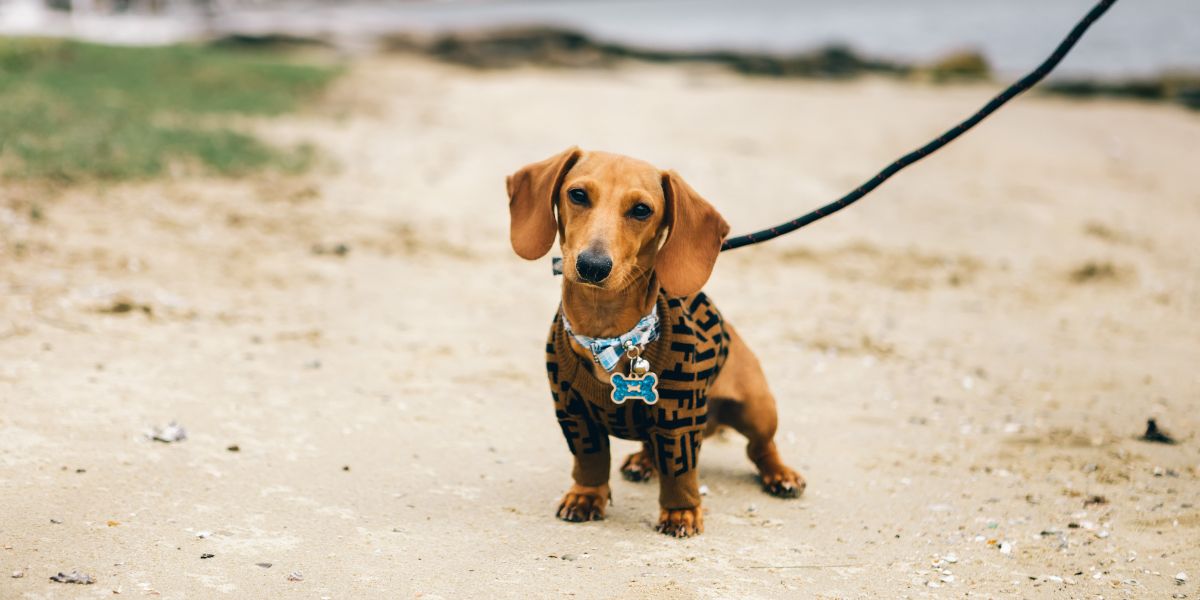
When it comes to choosing the most suitable collar and leash for your dog's size and breed, you'll need to navigate a myriad of options to find the perfect fit. From considering the specific needs of your furry friend to ensuring comfort and safety during walks, the process can be both rewarding and challenging. By understanding the key factors that influence your decision, you can make an informed choice that enhances your canine companion's overall well-being.
Importance of Proper Sizing
Choosing the right size collar and leash for your dog is crucial for their comfort and safety during walks and training sessions. Proper sizing ensures that the collar isn't too tight, which could cause discomfort or breathing difficulties. Similarly, a leash that's too long or too short may lead to difficulties in controlling your dog or even pose a tripping hazard.
When the collar fits correctly, it allows for effective communication between you and your furry friend. A well-fitted collar also prevents your dog from slipping out and getting lost during walks. Additionally, the right leash size provides you with better handling and control, making training sessions more efficient and enjoyable for both of you.
Factors to Consider for Size
Have you ever wondered what key factors influence the sizing of collars and leashes for your dog?
When considering the size of a collar, the most important factor is your dog's neck circumference. Measure around the base of your dog's neck where the collar will sit snugly but not too tight. For small breeds like Chihuahuas, a narrower collar is typically more comfortable, while larger breeds like Great Danes may require wider collars for better support. Additionally, take into account your dog's weight and fur thickness, as these can affect how the collar fits.
When it comes to leashes, the size of your dog also plays a crucial role. Smaller dogs may do well with lighter and shorter leashes for better control, whereas larger dogs might need stronger and longer leashes to handle their size and strength. Consider your dog's behavior and walking habits when selecting a leash length and material.
Collar and Leash Options
Exploring different collar and leash options can provide a customized and comfortable experience for your furry companion. When selecting a collar, consider factors like material, width, and closure type. For smaller dogs, lightweight and adjustable collars made of soft materials like nylon or leather are ideal. Larger breeds may benefit from wider collars for better support. Buckle closures offer security, while quick-release clasps provide convenience. Reflective collars enhance visibility during evening walks.
Leashes also come in various styles to suit different needs. Retractable leashes offer flexibility for dogs that enjoy exploring, while standard leashes provide more control during training. Reflective leashes improve safety during nighttime walks. Matching the leash length to your dog's size and behavior is crucial. For example, longer leashes give more freedom for larger, well-behaved dogs, while shorter leashes offer better control for smaller or more excitable breeds.
Matching Gear to Breed
To ensure optimal comfort and functionality, match your dog's gear to their specific breed characteristics. Different dog breeds have unique physical traits and temperaments that can influence the type of collar and leash that works best for them. For example, breeds with short noses like pugs or bulldogs may benefit from harnesses instead of traditional collars to avoid putting pressure on their sensitive necks.
Consider the size of your dog when choosing gear. Smaller breeds may do well with lightweight, adjustable collars, while larger breeds might require sturdier materials. Breeds with thick fur, such as huskies or malamutes, may need collars that can accommodate their fluffy necks without causing discomfort.
Additionally, the energy levels and behavior tendencies of specific breeds should also be taken into account. High-energy breeds like border collies or huskies may require secure, durable leashes to handle their spirited walks. On the other hand, calmer breeds might do well with standard leashes for their daily strolls. By selecting gear that aligns with your dog's breed characteristics, you can ensure a comfortable and safe walking experience for both you and your furry friend.
Tips for Fitting and Testing
Properly fitting and testing your dog's collar and leash is crucial for their comfort and safety during walks. When fitting a collar, ensure you can fit two fingers between the collar and your dog's neck to prevent it from being too tight. A collar that's too loose may slip off, posing a risk to your dog's safety.
For harnesses, adjust the straps to fit snugly but not too tight, allowing your dog to move comfortably. When testing the fit, observe your dog's movement to ensure they can walk, sit, and lie down without restriction. It's essential to regularly check the fit as your dog grows or gains/loses weight.
When testing the leash, make sure it's the right length for both control and freedom of movement. A leash that's too long can lead to tangling or allow your dog to wander off, while a leash that's too short can restrict their movement and cause discomfort.




